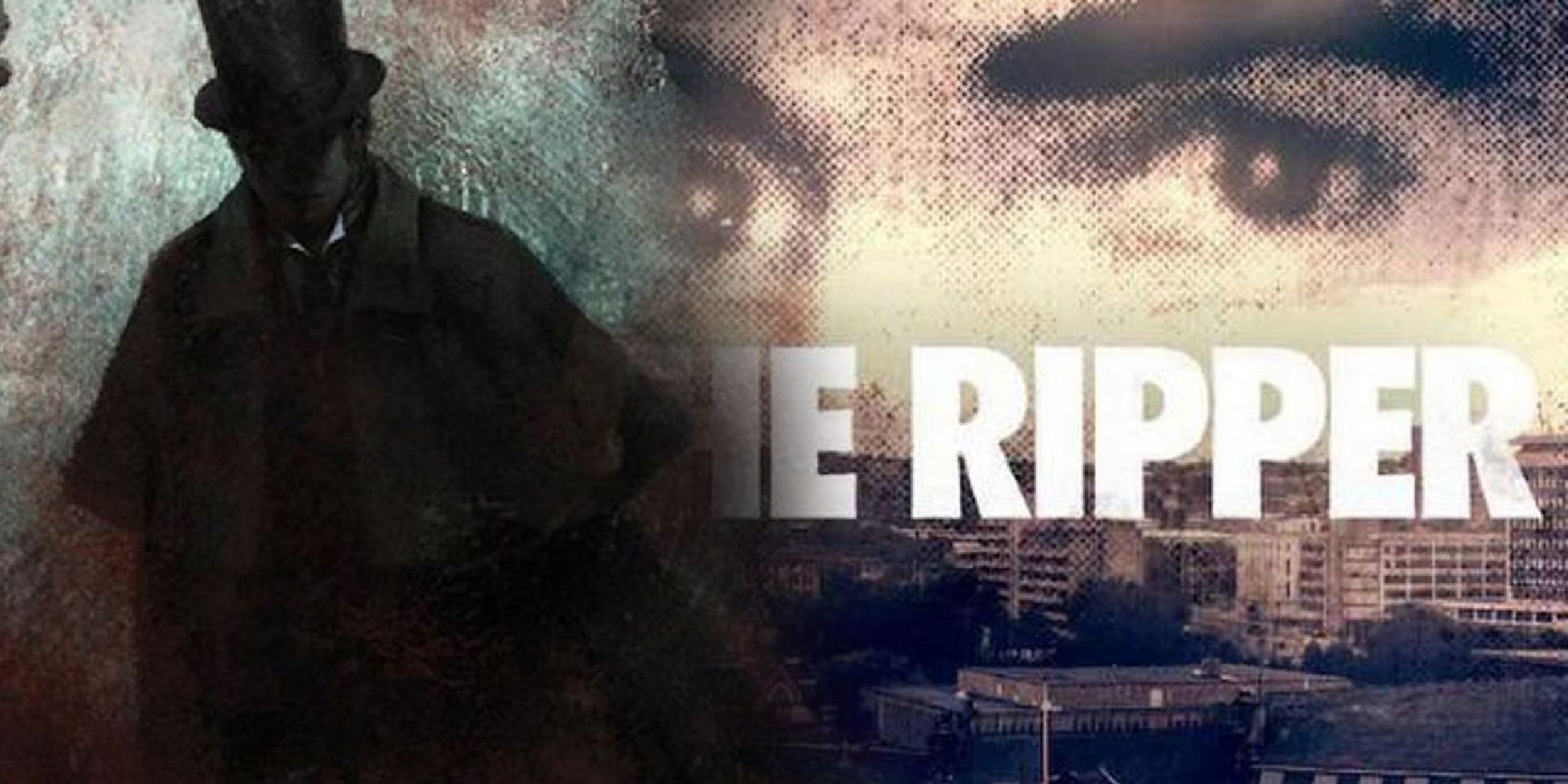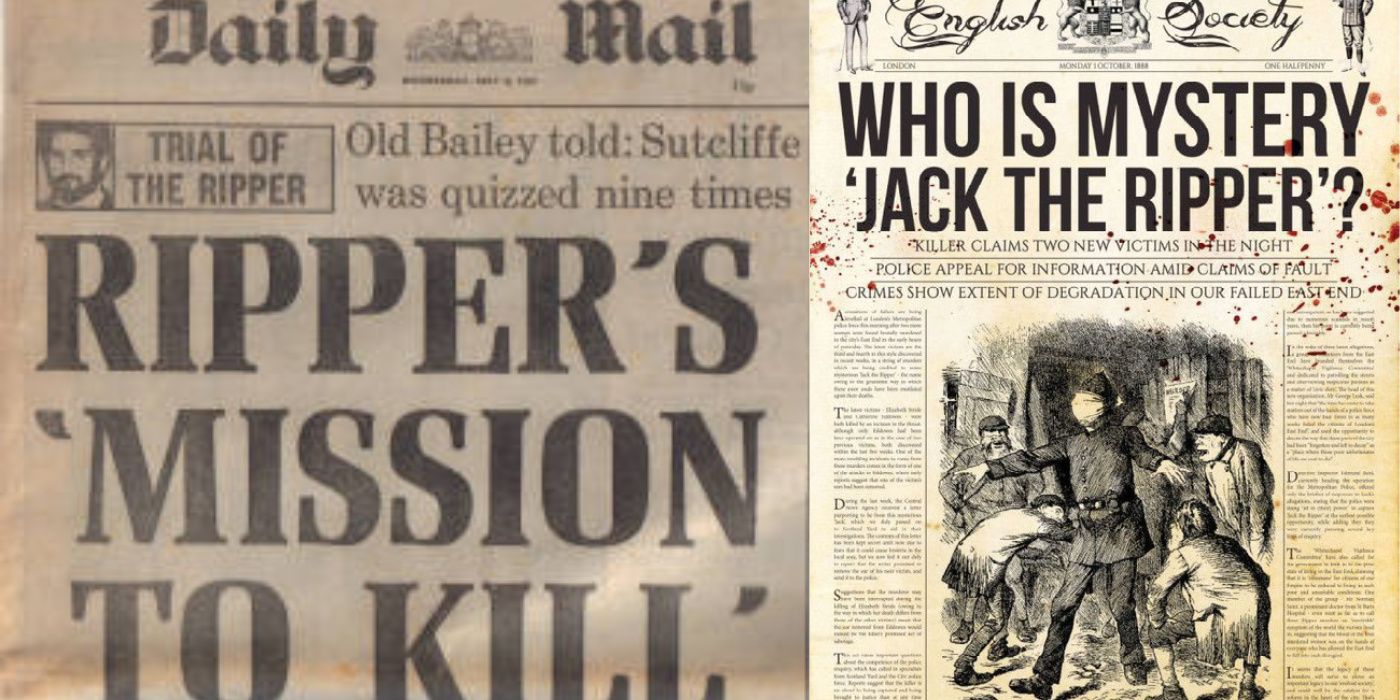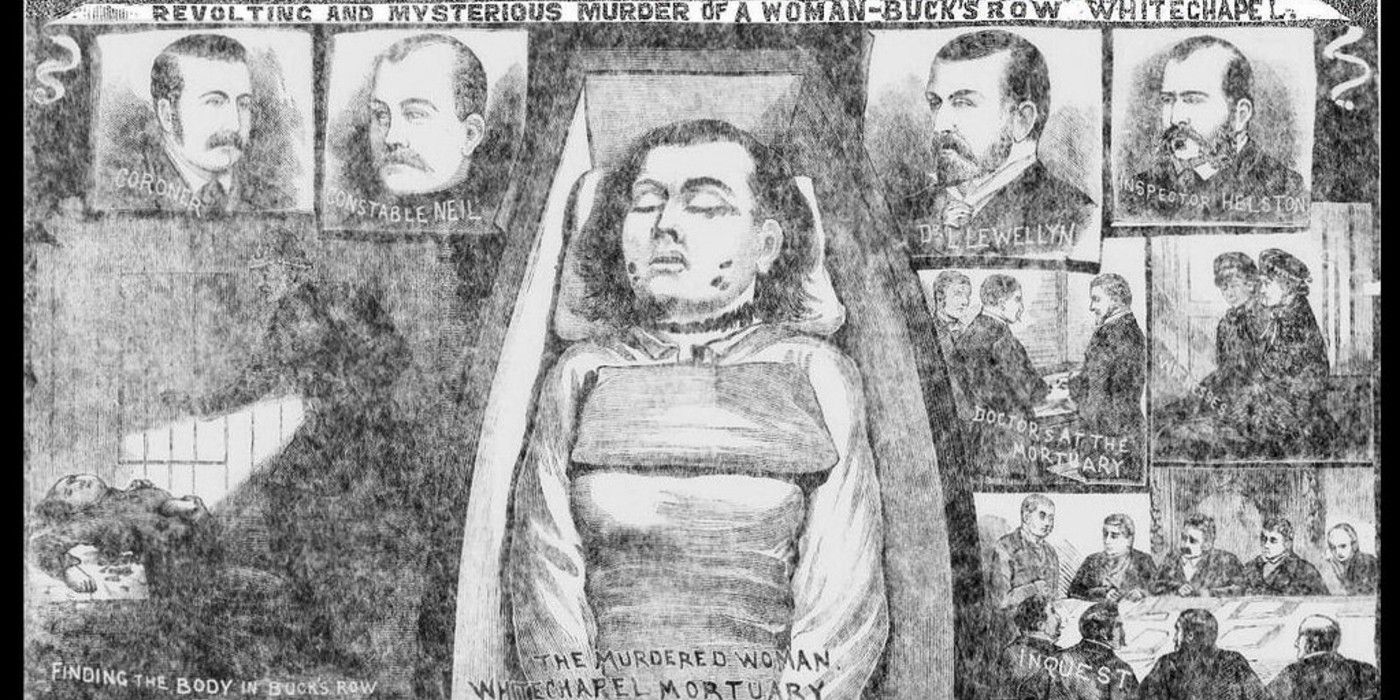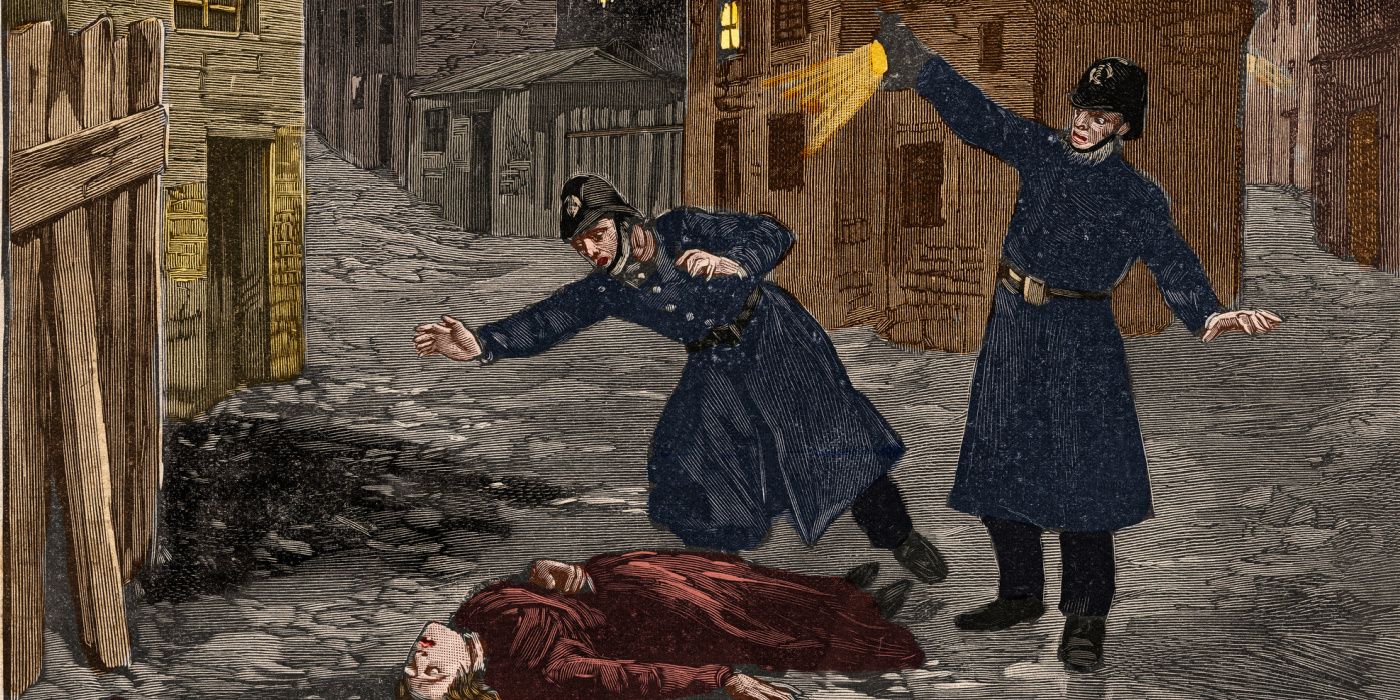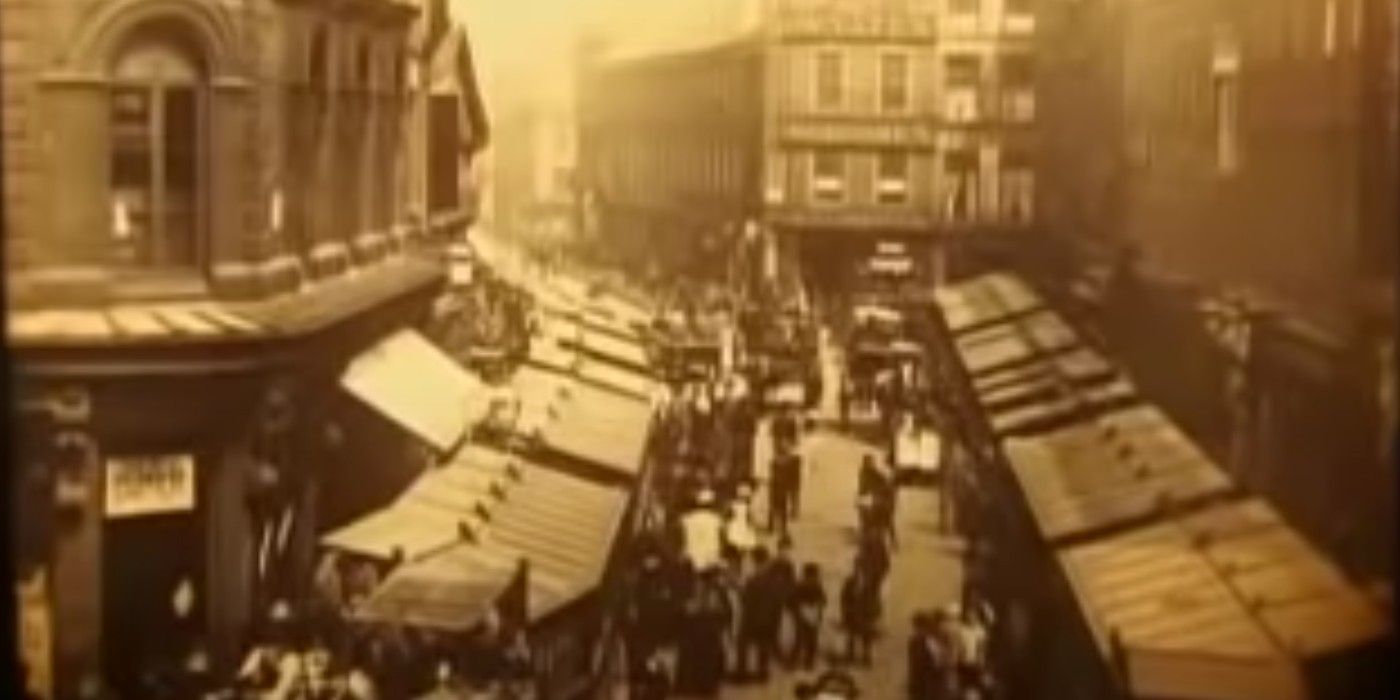Two serial killers both called "The Ripper" are featured in the Netflix Documentary The Ripper, which highlights the killings of Peter Sutcliffe. Sutcliffe recently passed away from complications due to COVID-19, but his horrific slayings in Leeds in the 1970s are still the topic of much discussion. The similarities cast between Sutcliffe and the 1888 serial killer Jack the Ripper inspired the press to dub him the Yorkshire Ripper.
The expertly-edited documentary gives audiences a glimpse back into Leeds in the 1970s, offering something that those interested in the Jack the Ripper case never had: video footage, backstories of the victims, and interviews with the actual police who worked on the case. So romanticized was the Jack the Ripper case that some theorize that the supposed likenesses between the two men may have hampered how police and public perceived the Yorkshire Ripper killings. Police officers in Yorkshire were on a subconscious chase for Jack the Ripper, forming fanciful theories based on the killings in 1888, in particular the type of women targeted, which was proven to not be quite the same.
There are, however, comparisons that can be drawn between the two men and the way in which they stalked, killed, and selected their victims. Both men targeted women, killed sex workers, and both led to a media frenzy and social outcry. The Rippers captured the imaginations of generations, both for their brutality and striking similarities.
The Ripper Nickname
A "Ripper" is classified as a killer who mutilates or brutalizes the bodies of his victims, particularly women. Historian Judith R. Walkowitz said in Feminist Studies that "the [Jack the] Ripper story has continued to provide a common vocabulary of male violence against women. [Its] persistence owes much to the mass media’s exploitation of Ripper iconography—depictions of female mutilation in mainstream cinema, celebrations of the Ripper as a ‘hero’ of crime—that intensify the dangers of male violence and convince women that they are helpless victims." The same narrative that followed popular culture’s first serial killer phenomenon certainly dogged the case in Leeds in the 1970s, and the male killer who targeted female victims was given a grabby name that would capture attention: The Yorkshire Ripper. Police said of the killings in Leeds that any woman was at risk, whether out late at night or home in her apartment, so the terror that swept through Yorkshire from 1975 to 1980 was very like the terror in London in 1888.
Like the man supposed to be Jack the Ripper, the Yorkshire Ripper appeared to become publicity-hungry. He seemed to want to be caught as much as he wanted to lord superiority over the police. Just as Jack the Ripper left many clues and notes for investigators to find, a person claiming to be the Yorkshire Ripper began to do the same, writing letters comparing himself to Jack the Ripper between 1978 and 1979. When officer Chris Gregg was called to serve on the Hallifax murder of Jodie Whittaker, he was told that George Oldfield had received a tape that he was certain was from the same man who sent the letters: "I'm Jack. I see you are still having no luck catching me. I have the greatest respect for you George, but Lord! You are no nearer catching me now than four years ago when I started. I reckon your boys are letting you down, George. They can't be much good, can they? Yours, Jack the Ripper." The police in both cases aided in the killer's publicity, transforming him more into a horrific boogeyman from the pages of a comic book than a tangible human being.
In the letters to the police, the man claiming to be the Yorkshire Ripper borrowed phrases from the letters allegedly written by Jack the Ripper. The phrase "cursed coppers," spelled in this way gave officers pause, and they started to investigate the similarities. In Jack the Ripper's letter, he said "I'm down on whores," and the Yorkshire Ripper's letter said, "my purpose is to rid the streets of them." An 1888 letter bore the words, "leather apron gave me fits," while the Yorkshire letter read, "that photo in the paper gave me fits." It was clear that someone was trying to copy Jack the Ripper's unique murder style, but unfortunately, the man who sent the letters and the man doing the killings were not one and the same.
How The Rippers Profiled Victims
In the killings of presumed sex workers, there are many variables that make their deaths more difficult to solve. This is something that killers are aware of, and so often take advantage of. There is very little protection for sex workers, and often very little care or consideration put into their lives due to their choice of occupation. In both cases, there is no certainty that the killers were targeting sex workers in particular or women in general. It is very possible that for both men, it was simply women that they abhorred, but found sex workers an easy target that made these mysterious murders difficult to trace. This proved true for Jack, who was never caught. There was an assumption that the Yorkshire Ripper targeted sex workers, but he also killed and attacked women of all professions. Police and press pushed the sex work angle, possibly to make for catchy headlines, or perhaps due to their own oversight.
There was not only a widespread hatred of sex work in Leeds from the general public, but from the police as well, making the investigation slow and arduous. Sex workers did not want to speak to the police, nor did their clients, and police investigators like Kenneth Davison did little to help by suggesting that sex work was a "sad reflection on human nature" to the press, creating an embarrassing situation for the clients of the murdered women to step forward. There was rampant poverty in Leeds in 1977, just as there had been in London's East End in 1888, leading many in those areas to elect the occupation. However, there was some question as to whether women like Wilma McCann were in fact sex workers, if the killer just presumed them to be sex workers, or if he was discriminating his female victims by their profession at all. In both cases, it can be said that sex work was simply the scapegoat, and the one thing absolutely in common between both killers is their apparent disgust for women.
Similar Murder Methodologies
The Yorkshire Ripper not only targeted women the same way Jack the Ripper did, but he also killed them in a similar way. Though without the same surgical precision of Jack the Ripper, the Yorkshire Ripper mutilated the lower abdominal region of his victims and in some cases removed the sex organs from his many victims, such as their breasts. Jack the Ripper has long been suspected to be a surgeon, perhaps an aristocrat, but it was clear that the Yorkshire Ripper, while every bit as savage, was not as educated.
When police were at a loss, Andy Laptew was made to take out Maureen Long, a survivor of the Ripper, and she was used as bait. Laptew remarks on how much she drank, complaining about how much money he spent that night. He didn't want anyone he knew to see them due to Long's profession. The Ripper attack had damaged her brain, and police described her inability to recall her attacker thusly: "there was nothing going on in her head." Eventually, after years of no results and more murders, women organized en masse in a "Reclaim the Night" rally, which saw the crowd protest revolved around male violence and the burden placed on women to protect themselves from the brutality, which spread across the nation. The nature of the murders was having an effect on the feminist movement, urging women in the 1970s to take back their power the way that women in the 1800s could not.
Chapeltown Vs. Whitechapel
There was a social aspect to the habits of both killers. Chapeltown in Leeds was very similar to London in 1888, full of fear of immigrants and rife with poverty, both boasting a thriving red light district. In Chapeltown, the Caribbean immigrants feared the police, refusing to talk to them, and in Whitechapel, immigration panic played a role in furthering the publicity for Jack the Ripper. In both cases, immigrants were profiled and considered suspects for the crimes. Londoners in 1888 thought Jewish people responsible, dubbing the murderer the anti-Semitic moniker "Jacob the Ripper." Not only did the psychological profile of the killers match, but it seemed the towns they practiced their heinous deeds in matched as well. Sutcliffe ventured outside Chapeltown, of course, but the small town where he had his first successful murder became the subject of much speculation and study.
Upon returning to Whitechapel, it is clear to see the fissures and tensions of class, gender, and ethnic relations in 1888 that may have informed the psychology of Jack the Ripper. Demonstrations and all-out riots colored West London and "outcast" or East London through 1886 and 1887. Whitechapel was thick with crime and villainy, like many slums, but it was also a place of strong family and community. The upper and middle class ventured into it as thrill-seekers, and, like Chapeltown after it, for the red light district. Jack the Ripper was profiled as either a man of leisure or a man not very good at his job, as was the case with Sutcliffe. These men would have not been sociable, but drawn to these hives as places vulnerable to violence. Anti-prostitution campaigns abounded in both time periods, in Jack the Ripper's time brought about by a muckraking series called "Maiden Tribute of Modern Babylon," which resulted in the brothels closing down and leaving sex workers unsafe and exposed to the wrath of the Ripper.

